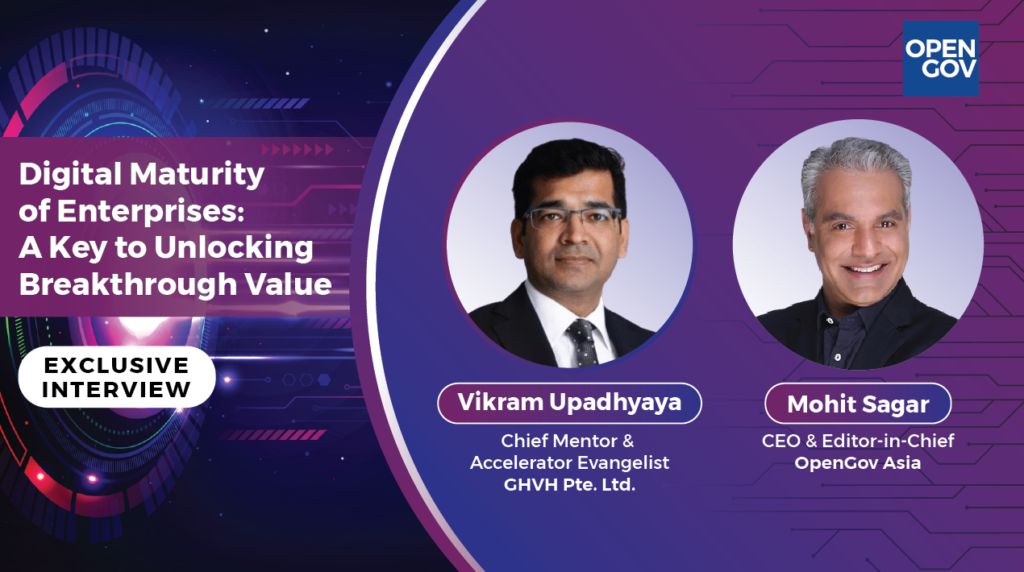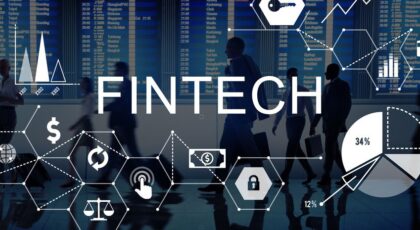
Enterprise transformation refers to a significant shift in the way a company conducts its day-to-day operations. This could involve adjusting an organisation’s fundamental technology, the structure of the company’s workforce or the way the company creates and markets its goods.
Enterprise transformation refers to a significant shift in the way a company conducts its day-to-day operations. This could involve adjusting an organisation’s fundamental technology, the structure of the company’s workforce or the way the company creates and markets its goods.
Enterprise transformation can take many different forms, one of the most prevalent of which is when an organisation makes a significant change in the products or services it offers. Currently, with digital technology, adjustments like this are occurring more frequently.
Companies are realising that they need to modify their approaches to meet the ever-evolving requirements of their customers as well as the consistently expanding standards set by their rivals.
Simultaneously, several Digital technologies, including Artificial Intelligence, the Internet of Things, Blockchain, Big Data, Virtual reality, Augmented Reality, Robotics and automation, among others, have the potential to transform how businesses operate. They can transform various functions of the value chain, such as logistics & supply, manufacturing, engineering, marketing, customer service, corporate management and support functions.
With their versatility and agility, these technologies can be deployed to numerous industries, among these are Healthcare, Food & Beverage, Manufacturing, Services and Mobility.
Innovative Business: What Lies Ahead?
In an exclusive interview with Mohit Sagar, CEO and Editor-in-Chief, OpenGov Asia, Vikram Upadhyaya, Chief Mentor & Accelerator Evangelist, GHVH Pte. Ltd recognises that innovation is important for a successful business.
“Businesses need innovation, not only for survival but for future growth,” says Vikram. “Innovation could emerge as product innovation, process innovation, service innovation or business model innovation to create a long-term sustainable advantage.”
Enterprises have been creating legacies based on research and development (R&D) which has LED them to incremental innovations. However, innovation is disruptive or transformational and it can be around product processes, services and business models.
Transformational innovation represents innovation that transforms businesses and innovates processes to create long-term sustainable, competitive, profitable business models. Disruptive innovation is targeted more towards identifying and inventing new mechanisms to solve existing and anticipated problem statements in businesses, which is also expected to have a business impact.
Many businesses do not distinguish between R&D and innovation. Enterprises today, however, are better able to distinguish themselves from one another and can understand and appreciate the impact that innovation has in comparison to R&D’s function.
R&D is an essential part of most businesses, and the benefits it brings are usually small and mostly limited to the people who work in R&D.
Innovation, on the other hand, isn’t just a function; it’s also a way of thinking for the whole organisation. It affects everything from the process to the product to the service to the business model, and the expected size of its effects is disruptive rather than incremental.
This further demonstrates how the current difficult business and economic environment has forced companies with lower levels of technology adoption and digital maturity to rethink their operations.
Enterprises can now assess the possibilities that technology integration may bring about, not only to address their current problem statements but also to consider new opportunities, whether it takes the form of a product, service, or business model.
There are a few common KPIs that should be measured regularly to gauge an organisation’s and its employees’ level of digital maturity. Vikram believes that because every organisation is unique, the KPIs used for assessments will vary.
For example, the key metrics for some common functions, like customer experience, data and insights, strategic and leadership, technology, operations, digital skill sets and so on, would need to be customised based on how they have changed and how they are changing now.
“We can get innovations which can predict based on the data analytics for the next 10 years,” Vikram reveals. “Every organisation should think out-of-the-box. Then they only need the right set of people who can guide them for the KPIs to be defined.”
Additionally, a variety of industries, including those in healthcare, food and beverage, manufacturing, services, FMCG, mobility, hospitality, and many more, can adapt to new technologies.
The following are crucial actions that businesses need to take today to digitally transform their futures:
- Identify your key employees’ level of digital maturity
- Research the technologies that are currently being used by the Enterprise’s various functions
- Select current issue citations
- Sort the problem statements according to priority
- Assess a system for locating, evaluating, and integrating digital technologies
- After a framework has been chosen and put into place, make the process iterative
- Establish it as the Enterprise’s mentality
Urban Ideas and Solutions Through LKYGBPC
When it comes to entrepreneurs who are truly pushing the envelope, Vikram is looking for certain characteristics. One of these is how the participants interact with businesses, which is determined by a unique set of criteria.
“And because we engage with various sets of parameters when looking at entrepreneurs, we can combine their efforts with those of the business,” Vikram explains.
Therefore, they bring the enterprise work and the entrepreneurs together when looking at the entrepreneurs, especially in the GHV DX LAB framework – they are the project managers and the system integrator for GHV.
The digital transformation, specifically the adoption of online business models and the general shift of economic and social activities online, particularly during the COVID-19 pandemic, has altered how economies operate, businesses function and societies interact.
The exploitation of data is the driving force behind the emergence of a new type of data-driven economy. It creates new opportunities for international cooperation to leapfrog the intermediate infrastructure of the industrial age, taking advantage of the new markets made available by digital platforms and the improved service delivery made possible by smart technologies.
In addition, the most effective mechanism in education would be to integrate innovation and entrepreneurship at the earliest possible stages of the educational system. In today’s context, entrepreneurship is about more than just passion, raising capital, or coding something; it’s about building a network around yourself to support your entrepreneurial journey. The network is critical.
Vikram spent sixteen years in Japan before relocating to Singapore and India to establish a business. He has realised that he must contribute significantly to society. For Vikram, LKYGBPC is a fantastic platform that can be an integral part of any entrepreneur’s entrepreneurial journey.
As opportunities for entrepreneurs are created through this platform, a global network of mentors and other ecosystem partners are integrated with LKYGBPC to focus on the entrepreneurs. “I think it’s a fantastic platform that is desperately needed right now, not just in the context of Singapore or Southeast Asia, but for the global market,” Vikram is convinced.
He believes that a combination of all these factors pushed him into the venture capital world. “I enjoy being a techie. But I’m enjoying my current role as a mentor to thousands of Asian entrepreneurs.”
Vikram has mentored over 1200 startups to date, including 3 that will soon be unicorns. He has personally invested in over 50 startups, and through the GHV Fund, he has invested in over 20 startups. “Every day, I learn something new and give it back to society in the same way.”
Building intellectual property (IP) rights has been the best part of his digital journey so far, and he hopes to keep doing this. “The level of self-satisfaction I feel is never as high as when I say IP is greater. You can make a lot of money consulting, but that doesn’t get me excited if you can’t create IP and work together. And that’s why what we’ve been doing around it can be great,” Vikram concludes.
Published on OPENGOV







